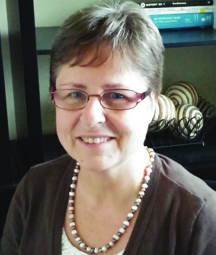By
Marjan Hong, posted January 04, 2017 —
Consider for a moment the following
scenario: A new student joins your class toward the end of February. To
complicate matters, this fifteen-year-old girl speaks no English beyond yes, no,
and house; and you have no idea what
her mathematical background might be. What do you do?
In Principles to Action:
Ensuring Mathematical Success for All (NCTM 2000), teachers are challenged to take action in the area of
access and equity by developing “socially, emotionally, and
academically safe environments for mathematics teaching and learning—environments
in which students feel safe to engage with one another and with teachers”(p. 115).
This applies to all students, including students who don’t speak English, students
with learning differences, students from diverse socio-economic backgrounds,
and students whose life experiences we can’t begin to understand.
An English language learner (ELL) meets new language
and new learningat the same time. When it comes to English language
acquisition, James
Cummins differentiates between basic interpersonal
communication skills (BICS) and cognitive academic language proficiency (CALP).
BICS—the language between peers, the day-to-day language of engaging socially—are
developed rather quickly at an average rate of six months to a year. Unfortunately,
BICS are not the skills that enable students to be successful in school. Here,
success depends on the development of CALP. CALP is more complex, and its
development is much slower, with average acquisition rates between five and ten
years. In addition to learning new vocabulary, academic language skills include
many of the educational goals listed in Blooms’ taxonomy, such as comparing and
making connections, analyzing, inferring, evaluating, and synthesizing.
Structured inquiry tasks, such as Jamie’s task
proposed in my previous blog, provide opportunity for English language learners
to purposefully engage with academic language. For a given task, students might
use both academic and nonacademic language as they dig in and try to interpret
the task at hand. This could include a restatement of the problem, clarification
of the vocabulary involved, or peer discussion of previously learned concepts
that are central to the task at hand.
One central component of inquiry-based
instruction is questioning strategies. In his book Teaching for Excellence,
Spence Rogers devotes an entire chapter to effective questioning techniques. One
such question is, “What did you hear somebody say?” This is an empowering
question for English language learners. An ELL at the beginning of language
acquisition mimics and processes the result. This student may have background
knowledge of the mathematics that is being explored but not the academic
language necessary to communicate the understanding. This type of question promotes
active listening, but it also provides the critical academic language the
student can mimic and process.
Another key take-away from this chapter is
what I refer to as the power of might.
Consider the differences in the possible structures of the question for Jamie’s
task:
• What
does Jaime’s “less complicated” expression look like?
• What
might Jaime’s “less complicated” expression look like?
In the first version of the question, there
is an implied correct answer, which is intimidating to some students. Moreover,
it kills discussion much like yes/no questions. You either come up with the
expression, or you don’t. The second version of the question allows for a
variety of answers, providing opportunities for clarifying questions,
justification, revision, and more. The simple substitution of the word might opens up the task and invites all students
in.
This brings me back to the question posed at
the beginning of the blog: A new student joins your class toward the end of
February. To complicate matters, this 15-year-old girl speaks no English and
you have no idea what her mathematical background might be. What
do you do? How might you respond?
When faced with this situation, my math
teacher stood in front of our class, wrote a question on the board, and
prompted students to work in small groups. He then came to my desk, crouched
down, and started to draw. My first CALP words in math class that day were rectangle, area, and perimeter. The
next day, I worked with two other students on problems involving area and
perimeter of rectangles.
 Marjan
Hong, [email protected],
has worked in mathematics education for nearly thirty years as a teacher,
mentor, curriculum specialist, and consultant. She is currently curriculum
content developer for Discovery Education. Her passions include access and
equity in mathematics education, empowering teachers, and inquiry-based
learning.
Marjan
Hong, [email protected],
has worked in mathematics education for nearly thirty years as a teacher,
mentor, curriculum specialist, and consultant. She is currently curriculum
content developer for Discovery Education. Her passions include access and
equity in mathematics education, empowering teachers, and inquiry-based
learning.